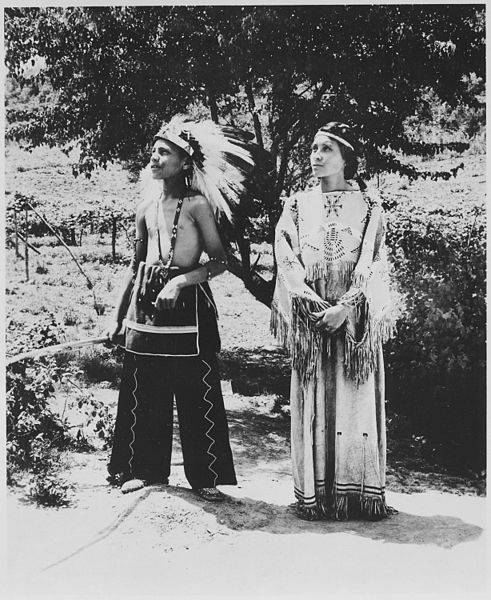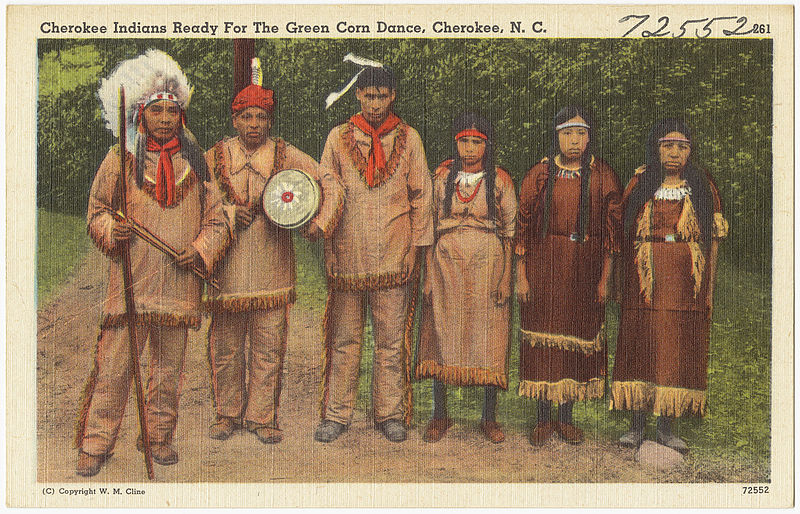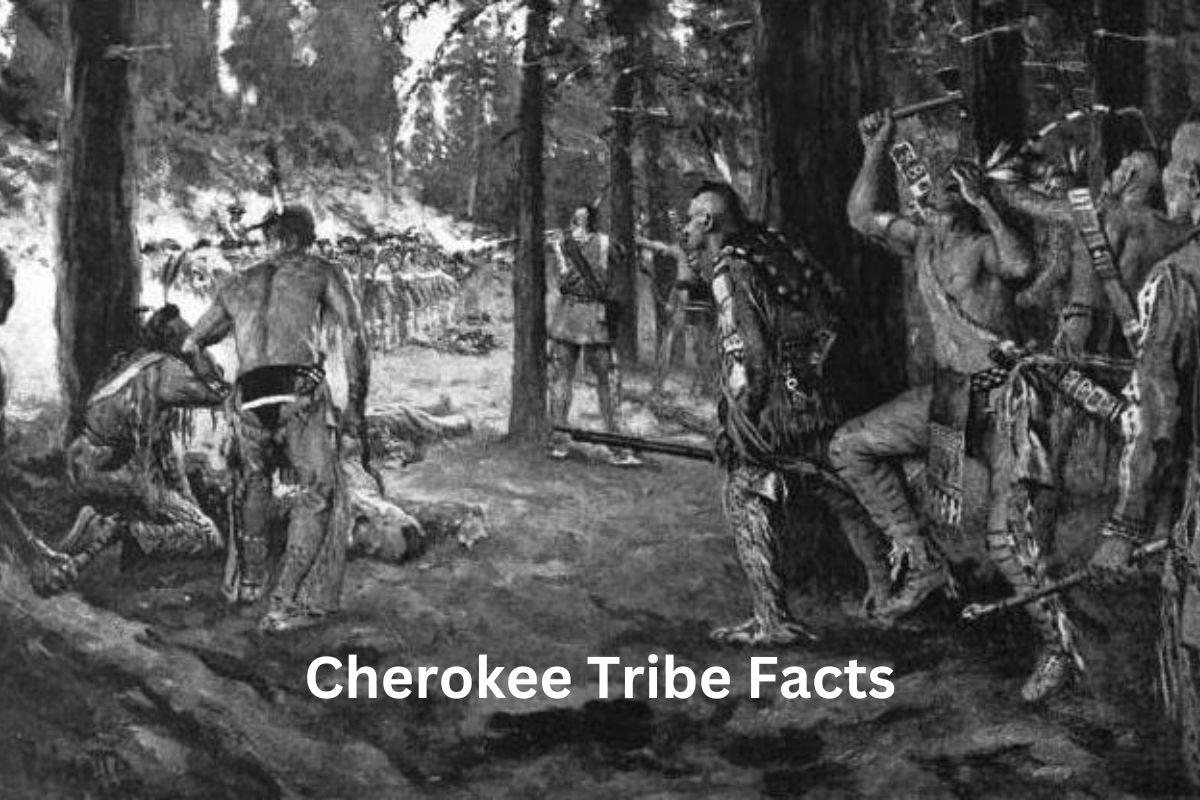The Cherokee Tribe, also known as the ᏣᎳᎩ (Tsalagi) in their native language, is an indigenous Native American people with a rich and storied history.
The Cherokee have deep roots in the southeastern region of the United States, where they have inhabited the land for thousands of years. Renowned for their resilience, cultural contributions, and historical significance, the Cherokee Nation holds a prominent place among Native American tribes.
The Cherokee Nation’s recognition as one of the “Five Civilized Tribes” stems from their assimilation of certain European customs and practices.
They adopted elements such as agriculture, permanent homes, a written language, and a centralized government system. Despite these adaptations, the Cherokee maintained their distinct cultural identity and sovereignty.
Tragically, the Cherokee Nation faced forced removal from their ancestral lands in the 1830s. The Indian Removal Act led to the infamous Trail of Tears, during which thousands of Cherokee people were forcibly relocated to present-day Oklahoma.
This devastating journey resulted in the loss of many lives and profound hardship for the Cherokee community.
However, the Cherokee Nation demonstrated remarkable resilience and managed to rebuild and reestablish their government and cultural heritage in their new homeland.
Facts About the Cherokee Tribe
1. The Cherokee are also known as the ᏣᎳᎩ (Tsalagi) in their own language
The Cherokee Tribe, also known as the ᏣᎳᎩ (Tsalagi) in their own language, have a deep historical and cultural connection to the southeastern region of the United States.
Their ancestral lands once spanned parts of present-day Alabama, Georgia, Kentucky, North Carolina, South Carolina, Tennessee, and Virginia.

2. The Cherokee people have a rich history that predates European contact
The origins of the Cherokee people can be traced back thousands of years. They have a rich history of inhabiting the southeastern United States, with evidence suggesting their presence in the region as early as the Paleo-Indian period (around 10,000 BCE).
3. The Cherokee Nation is the largest federally recognized tribe in the United States
The Cherokee Nation is the largest federally recognized tribe in the United States. It encompasses both tribal citizens residing within the Cherokee Nation’s jurisdictional boundaries in northeastern Oklahoma and those living outside the tribal lands throughout the United States.
4. The Cherokee had a complex social and political structure
The social and political structure of the Cherokee was complex and sophisticated. They were organized into matrilineal clans, with kinship and descent traced through the mother’s line. Each clan had its own responsibilities and functions within the tribe, such as governance, agriculture, and defense.

5. Sequoyah, also known as George Gist or George Guess, was a Cherokee silversmith who created the Cherokee syllabary
Sequoyah, a revered figure in Cherokee history, played a pivotal role in preserving and advancing Cherokee culture. Born in the early 1770s, he developed the Cherokee syllabary, a writing system composed of 85 characters representing the sounds of the Cherokee language.
Sequoyah’s syllabary revolutionized communication among the Cherokee people and played a crucial role in the preservation of their language and cultural heritage.
Today, the syllabary remains an important part of Cherokee identity and is taught in schools and used in publications and signage. Sequoyah’s contribution is widely recognized as one of the most significant achievements in Native American linguistics.
6. The Cherokee were one of the “Five Civilized Tribes” because of their adoption of European agricultural practices
The designation of the Cherokee as one of the “Five Civilized Tribes” arose from their adoption of certain practices and customs from European settlers.
These practices included adopting European-style agriculture, building permanent homes, and establishing a written language and legal system. The Cherokee Nation sought to assimilate certain aspects of European culture while still maintaining their distinct identity and sovereignty.
7. The Cherokee Nation was forcibly removed from their ancestral lands in the 1830s through the Indian Removal Act
The forced removal of the Cherokee from their ancestral lands, known as the Trail of Tears, was a tragic and devastating event in their history. In the 1830s, the U.S. government enacted the Indian Removal Act, which aimed to relocate Native American tribes in the southeastern United States to lands west of the Mississippi River.
The Cherokee Nation resisted removal, but ultimately thousands of Cherokee people were forcibly relocated to present-day Oklahoma. The journey was arduous, and many perished due to disease, starvation, and exposure.
The Trail of Tears remains a significant and painful chapter in Cherokee history, serving as a reminder of the resilience and strength of the Cherokee people.
8. Despite the forced removal, the Cherokee Nation managed to rebuild and reestablish their government in Oklahoma
Despite the hardships faced during the Trail of Tears, the Cherokee Nation demonstrated resilience and determination in rebuilding their community.
After arriving in present-day Oklahoma, they established a new government and worked to preserve their cultural heritage. In 1839, the Cherokee Nation drafted a constitution, creating a structure for their government and affirming their sovereignty.
They established schools, developed a written constitution, and revitalized their cultural practices. Over time, the Cherokee Nation has continued to thrive and assert its sovereignty and self-governance.
9. The Cherokee Nation has its own judicial system, legislative body, and executive branch
The Cherokee Nation has its own distinct government system and institutions. They have a three-branch government, consisting of an executive branch led by a Principal Chief, a legislative branch known as the Tribal Council, and a judicial branch with its own courts.
These governmental bodies make decisions and enact laws that affect the Cherokee Nation’s citizens and its jurisdictional territories.
10. The Cherokee are known for their cultural traditions, including their language, music, dances, and crafts
Cultural preservation is highly valued within the Cherokee Nation. The Cherokee people have a deep connection to their heritage, and efforts are made to preserve and promote their language, music, dances, crafts, and traditional knowledge.
Language programs, cultural centers, and educational initiatives are established to pass on the Cherokee language and traditions to younger generations. Cultural events and festivals are held regularly to celebrate and showcase the rich cultural heritage of the Cherokee people.
The commitment to cultural preservation helps strengthen their identity and serves as a testament to their enduring legacy.
11. The Cherokee have a strong connection to nature
The Cherokee people have a profound reverence for nature and the environment. They believe in the interconnectedness of all living beings and the importance of maintaining a harmonious relationship with the natural world.
The Cherokee have traditional ecological knowledge passed down through generations, which includes sustainable practices in agriculture, hunting, and resource management. This deep connection to nature is reflected in their spiritual beliefs, ceremonies, and the incorporation of natural elements in their art and crafts.
12. The Cherokee Phoenix, first published in 1828, is the first Native American newspaper
The Cherokee Phoenix, first published in 1828, holds significant historical importance as the first Native American newspaper. It was both written in English and Cherokee, providing a platform for the Cherokee people to share news, literature, and cultural information.
The newspaper played a crucial role in preserving the Cherokee language, promoting literacy, and fostering a sense of community among the Cherokee people during a time of rapid change and upheaval.
13. The Cherokee Nation has been actively involved in contemporary issues
The Cherokee Nation actively engages in contemporary issues and advocacy efforts. They work to protect and defend Native American rights, preserve tribal lands, and promote social and economic development for their citizens.
The Cherokee Nation has been involved in legal battles, lobbying, and public outreach to address issues such as tribal sovereignty, healthcare, education, and environmental concerns. They are vocal advocates for Indigenous rights and strive to ensure a better future for their community and Native American people as a whole.
14. The Cherokee language is considered endangered, with only a small percentage of tribal members speaking it fluently
Efforts are being made to revitalize and preserve the Cherokee language, as it is considered endangered. Language programs, immersion schools, and community initiatives aim to teach the language to younger generations and ensure its continuity.
The Cherokee Nation places great value on linguistic revitalization as a means to strengthen cultural identity, foster intergenerational connections, and preserve the unique worldview embedded within the language.
Joy Harjo, a member of the Muscogee (Creek) Nation with Cherokee heritage, serves as a prominent figure in contemporary literature and poetry. In 2019, she became the first Native American U.S. Poet Laureate, using her platform to highlight Indigenous voices and address issues affecting Native communities.
15. The Cherokee Nation has made significant contributions to various fields, including literature, art, sports, and politics
The Cherokee people have made significant contributions to various fields and have produced notable individuals. In literature, authors like John Rollin Ridge, Linda Hogan, and Thomas King have explored Cherokee themes and history in their works.
Cherokee artists have excelled in various mediums, creating traditional and contemporary art that showcases their unique perspectives and cultural expressions.
In sports, athletes like Jim Thorpe, a member of the Sac and Fox Nation with Cherokee ancestry, became one of the greatest athletes of the 20th century, excelling in football, baseball, and track and field.
In politics, Wilma Mankiller, the first female Principal Chief of the Cherokee Nation, made significant strides in tribal governance and advocacy for Native American rights.
